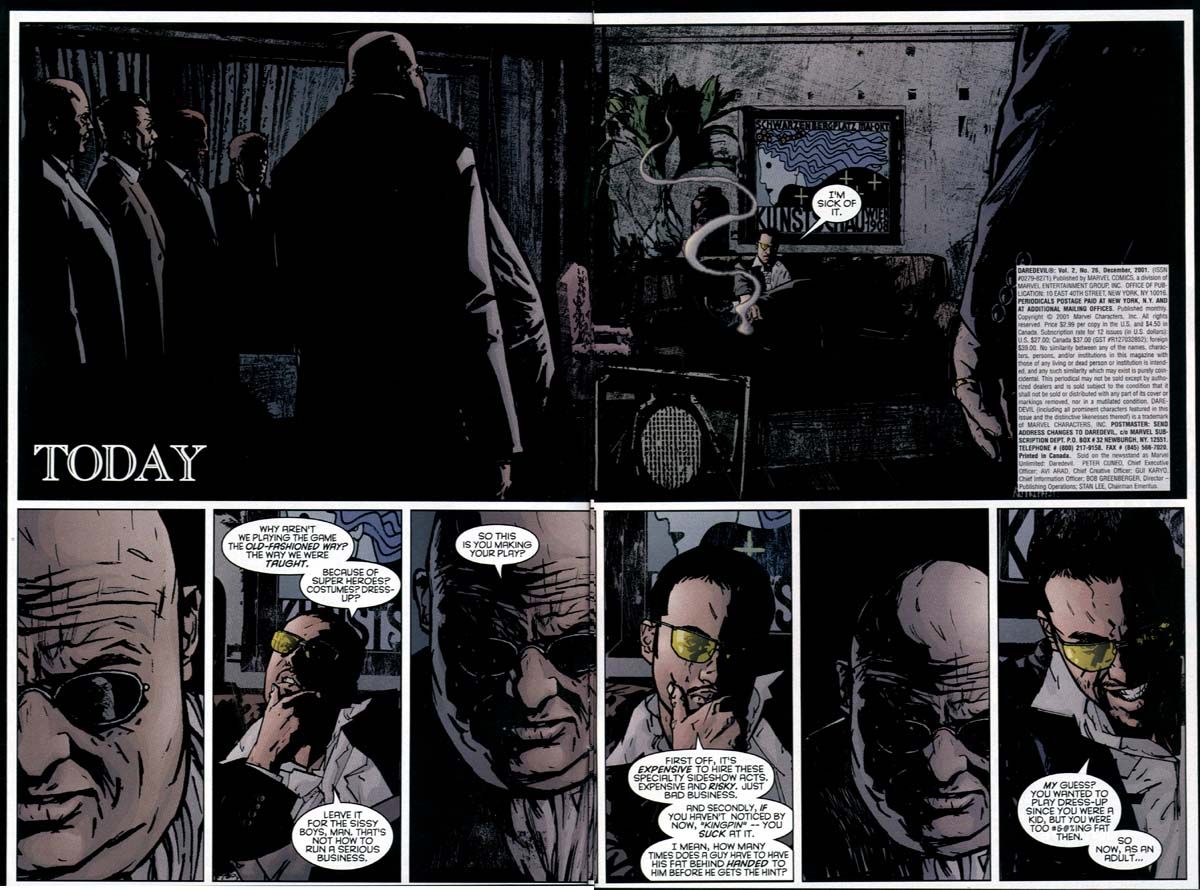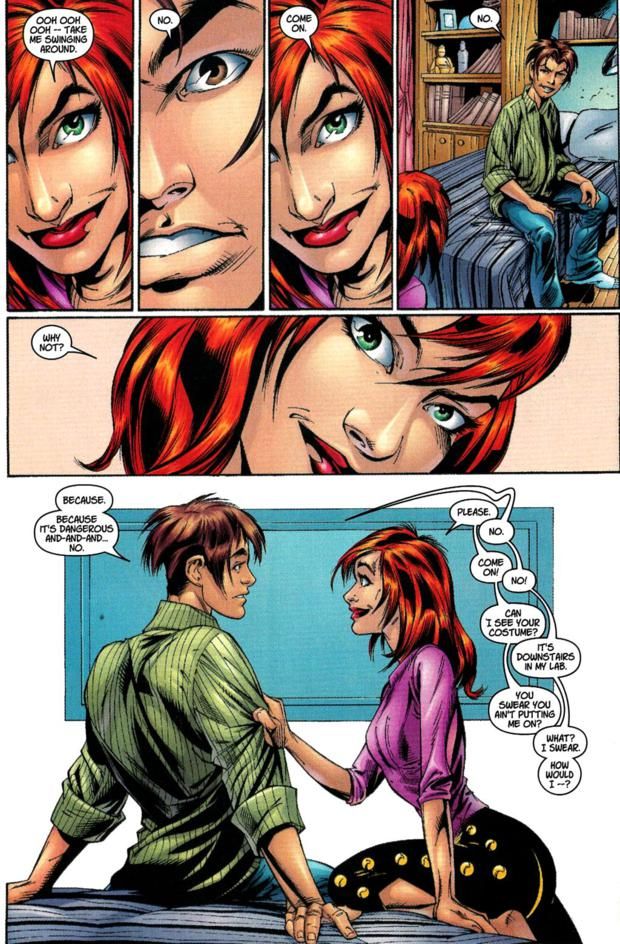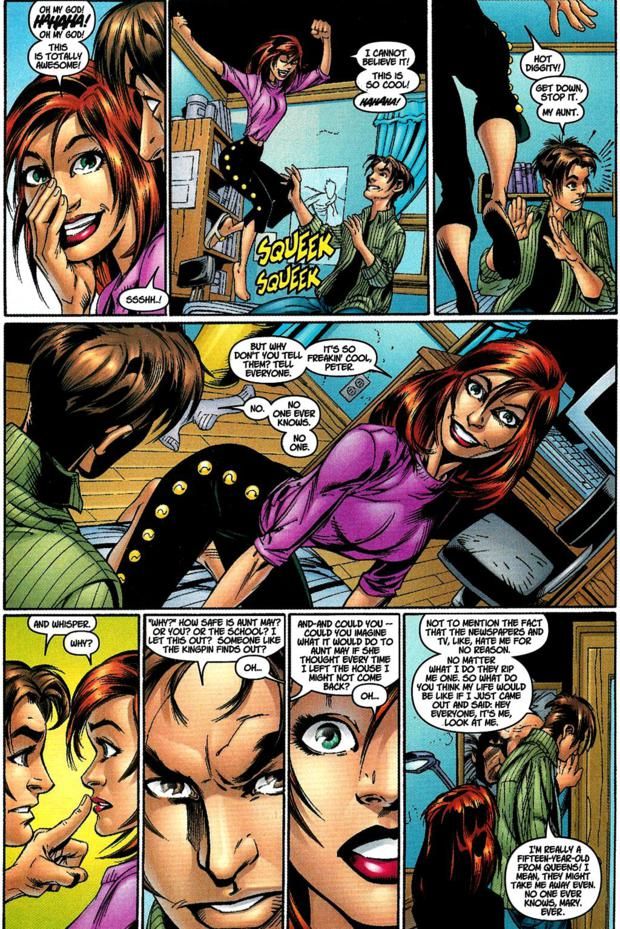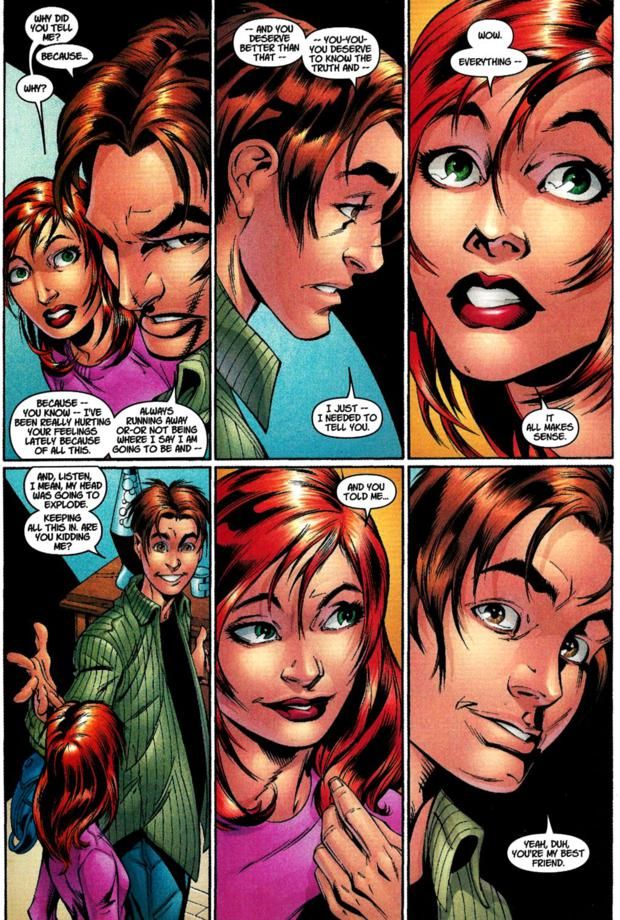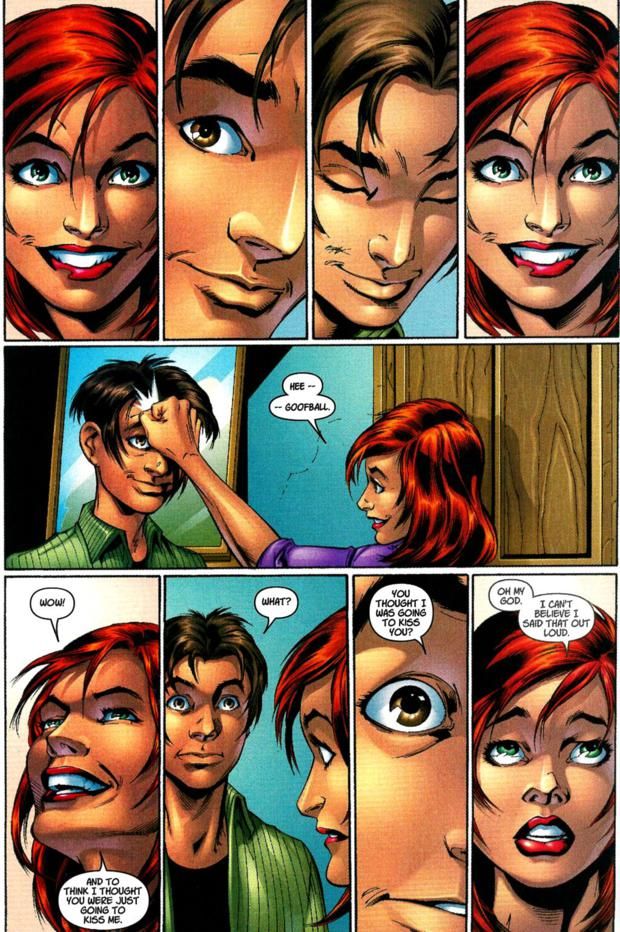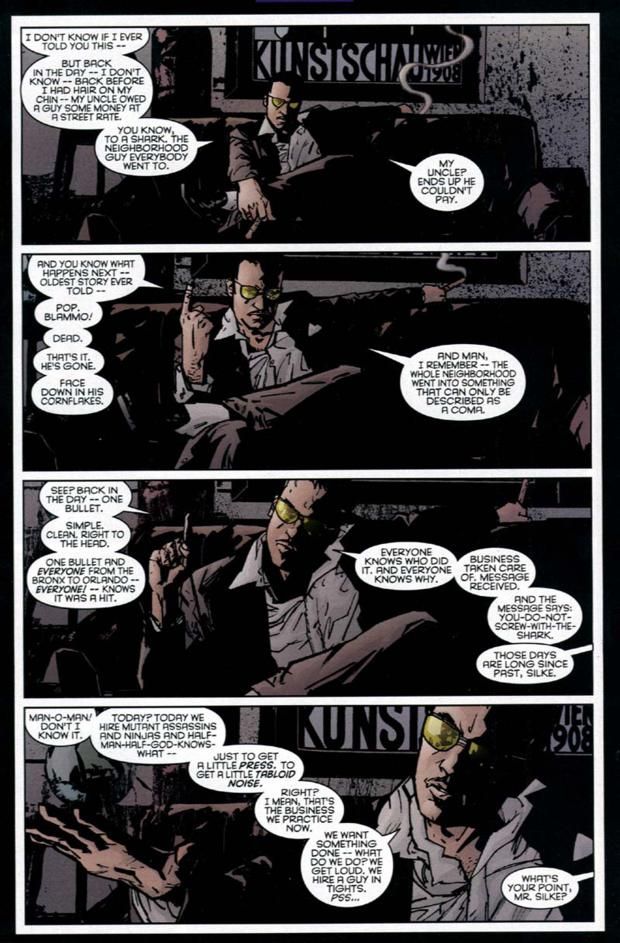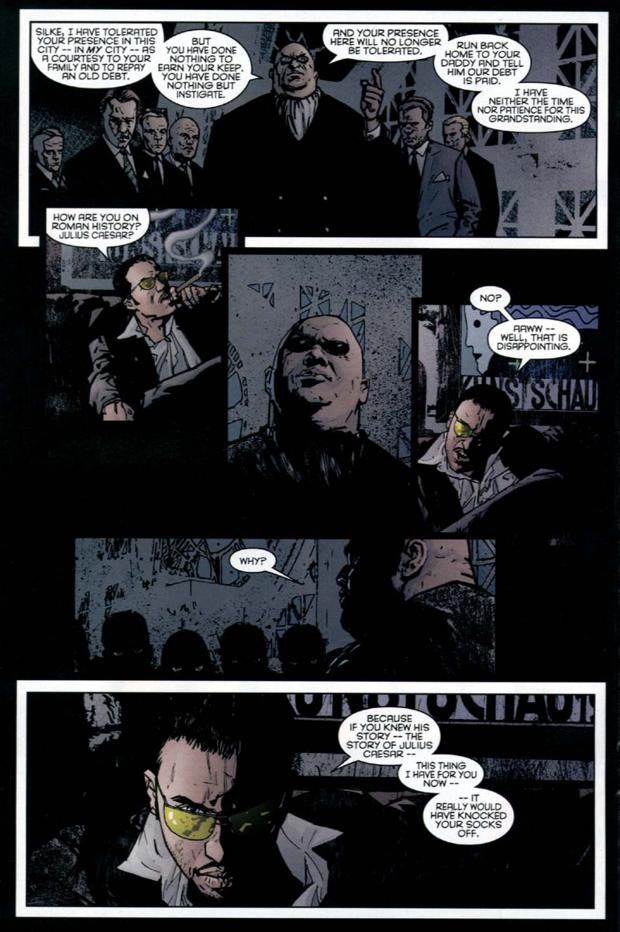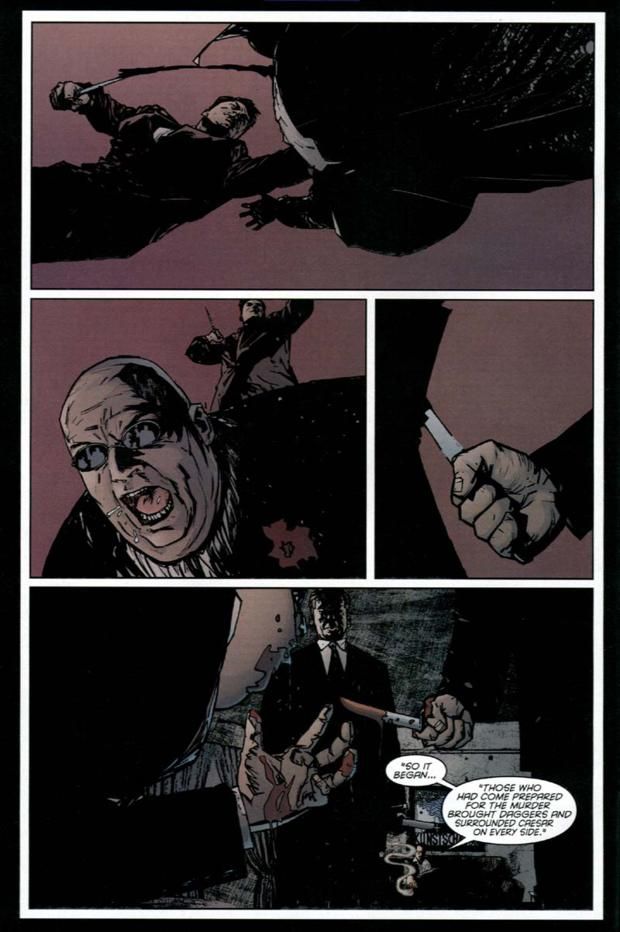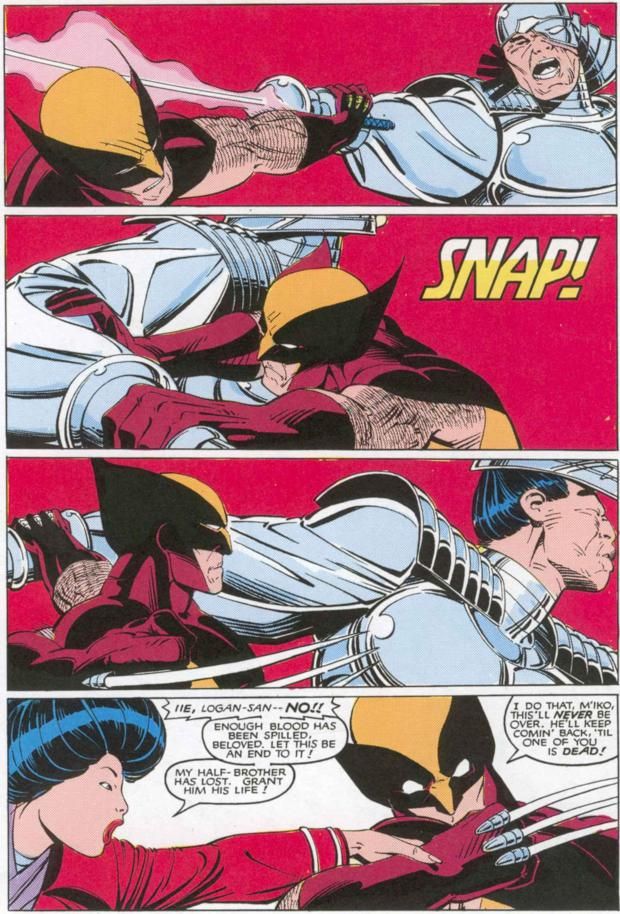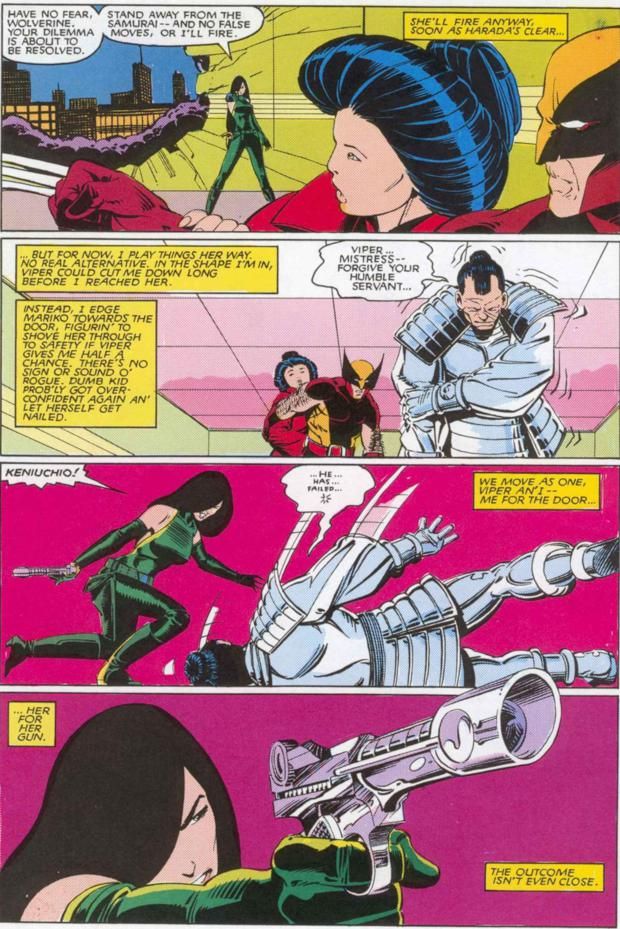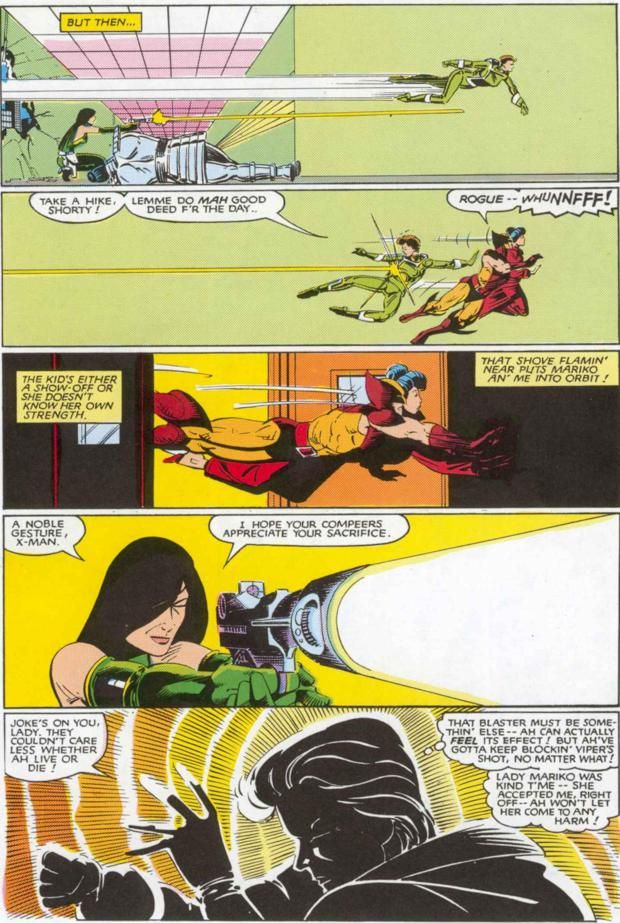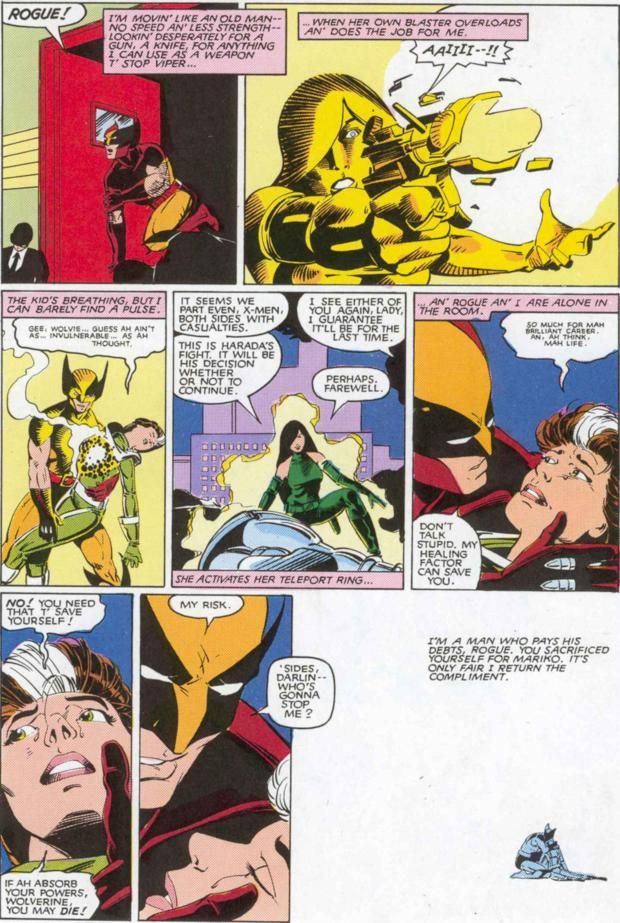You voted, now here are the results of your votes for your favorite comic book creator runs of all-time! We'll be revealing three runs a day for the rest of the month. Here is a master list of all of the runs revealed so far.
Here's the next three runs...
17. Brian Michael Bendis’ Ultimate Spider-Man – 501 points (6 first place votes)
Ultimate Spider-Man #1-133 (plus a #1/2 issue), Ultimate Comics Spider-Man #1-15, Ultimate Spider-Man #150-160
While it seems like such an obvious idea now, when Ultimate Spider-Man came out, very few people gave it a chance, thinking it was just another revamp of Spider-Man for kids, which had been tried before, and flopped. So it was with some great surprise that Ultimate Spider-Man not only became a hit, but it was the highest selling Spider-Man title for quite awhile (until JMS took over Amazing Spider-Man, I believe).
The key to the book was writer Brian Michael Bendis' ability to depict the humanity of both Peter Parker and the characters around him, in this Spider-Man reboot that started over from scratch, and left Peter a perennial teenager.
One of the earliest major changes was the way that Bendis stretched out the origin of Spider-Man. By giving us more scenes with Uncle Ben, his death is that much more tragic.
Another major change in the comic was Mary Jane Watson. In the original series, it was almost three years before Mary Jane showed up - here, she not only shows up right away, but she is completely different from the MJ from the 60s, as this MJ is almost as brainy as Peter. In a landmark early issue of the series, Bendis has Peter reveal his identity to Mary Jane in an issue that is made up of pretty much just the two teens talking to each other in Peter's room...
Throughout the series, Bendis introduces new versions of classic Spider-Man villains, as well as different versions of supporting characters, like Ben Urich, J. Jonah Jameson and Aunt May. The Kingpin is a major villain, as is Norman Osborn, the Green Goblin.
Aiding Bendis during his initial run was Mark Bagley, who already had had a substantial tenure as the artist on Amazing Spider-Man, so Bagley was only going to do the first story arc, almost as a favor - instead, he ended up doing 110 issues!! Not only did he do 110 issues, but that was with the book releasing about 18 issues a year, as opposed to the standard 12. The consistency that Bagley gave the title was also a great boon to the title.
A few years into the run, Bendis shook up the title by adding Kitty Pryde to the cast as Peter's new girlfriend (as Peter feels his life is too dangerous for a normal girl like Mary Jane), which was a brilliant move by Bendis.
After Bagley left the title, Stuart Immonen drew the title until it ended with #133. At this point, the series relaunched as Ultimate Comics Spider-Man with artist David LaFuente. This new series was almost more of a team book, as Spider-Man's teen friends (including superheroes Human Torch, Iceman and Kitty Pryde and his two best friends, Gwen Stacy and Mary Jane Watson) became just as important to the title as Peter Parker himself.
Eventually, Bagley returned to the title as Bendis brought the life of Peter Parker to a close with the tragic ending to the series, the Death of Spider-Man.
Bendis is now doing a new Ultimate Spider-Man series starring a brand-new Spider-Man named Miles Morales.
16. Brian Michael Bendis and Alex Maleev’s Daredevil – 514 points (7 first place votes)
Daredevil #26-50, 56-81 (Maleev did not draw #38-40)
What is most remarkable to me about the run that Brian Michael Bendis and Alex Maleev did on Daredevil is how tightly plotted the fifty or so issue story was by Bendis. A lot of his works seem to be a little open-ended, but his run on Daredevil was quite focused. Of course, as good as the story was, the artwork by Alex Maleev was possibly even better, as Maleev made the perfect marriage between the artwork of Frank Milller that made Daredevil such a major work and the more noir elements that Bendis wanted to use with the book, as Daredevil under Bendis was very much a crime comic.
In his first storyline, Bendis dealt with an upstart gangster trying to take over the Kingpin's racket.
This led to a violent encounter with the Kingpin's estranged wife, Vanessa, as well as Daredevil's secret identity being revealed. This was a major plot point throughout Bendis' run, as he showed how Matt Murdock dealt with everyone knowing that he was Daredevil.
During this time, Bendis introduced Milla Donovan, a blind woman who eventually became Matt's wife.
Another major storyline was when the Owl attempted to take over the Kingpin's (now vacant) racket, but the Kingpin returns to try to take it himself - this leads to Matt making a dramatic decision about who exactly will run his neighborhood of Hell's Kitchen.
Hell's Kitchen was a character itself during Bendis' run, and Maleev depicted it beautifully.
After a time, Bendis made a revelation about Daredevil's mental state that was mind-blowing, and really tied together the entire run, just in time for one final storyline that would set things up for the next run of Ed Brubaker and Michael Lark.
It's one of Bendis' finest comic works.
15. Chris Claremont's Solo X-Men – 533 points (14 first place votes)
Uncanny X-Men #165-279 plus a bunch of Annuals
For the first 70 or so issues of Chris Claremont's Uncanny X-Men, the book had only two artists, Dave Cockrum and John Byrne, and following up Byrne's run was sidestepped by bringing back the artist who had PRECEDED Byrne, Cockrum. So when a new artist was needed, for a book that was slowly becoming one of Marvel's biggest sellers (although not yet AT that point), it was a good gig, but a scary one.
So in stepped Paul Smith, and by the time he left, just ten issues after he joined, Uncanny X-Men was definitively Marvel's biggest superhero comic book.
Smith's biggest strength was probably his biggest weakness, as well, which was his great attention to detail. His books were filled with such detail that every emotion on every character was just bursting off the page. So you can understand how doing each issue like that, just throwing his whole self into the production, would take its toll on him.
And lucky for Smith, Claremont wrote a number of brilliant scripts during this run that took advantage of Smith's penchant for characterization, most specifically the storyline of Wolverine's marriage, which is PROBABLY the most acclaimed story Claremont wrote for Uncanny X-Men outside of the Byrne run. Such an amazing story, filled with rich character moments as well as Smith's beautiful art, which Claremont, to his credit, used to great effect (there are a number of practically mute scenes during the storyline).
The main gist of the story is that while in Japan for his marriage, most of the X-Men are taken out via poison. Only Wolverine and the newly reformed Rogue (who had just joined the X-Men after fighting them as a member of the Brotherhood of Evil Mutants) remained to stop the Silver Samurai and Viper. Rogue ends up changing Wolverine's attitude about her big time...
Such a classic sequence. Paul Smith was amazing.
As was the case for the X-Men juggernaut of the 80s, whoever an artist replaced was seen as impossible. Replace Byrne and Cockrum with Paul Smith? Impossible!
And yet when it came time for Smith to leave the book, it was "Replace Paul Smith? Impossible!"
So that was the task for John Romita, Jr., the young budding superstar that was coming off a popular run on another one of Marvel's major titles, Amazing Spider-Man.
Matched with inker Dan Green, Romita produced artwork that was a bit grittier than previous X-artists, and it matched writer Chris Claremont's slightly darker stories of the mid-80s.
This was the run where Kitty calls the guy the N-word, where Professor X is almost beaten to death, where Magneto ends up taking over the team, where Wolverine stabs Rachel in the chest to keep her from killing - it was not the funnest of times for the X-Men, and Romita left the book just as one of their darkest periods period came up, the Mutant Massacre.
By the time Romita left, it was once again "Replace John Romita Jr.? Impossible!"
When Marc Silvestri took over as regular artist on Uncanny X-Men, the X-Books were, well, "the X-Books," which was not the case for when Byrne and Smith (and when JRjr took over, there was just one other X-title) took over. This was not just a comic book, this was a FRANCHISE, and Silvestri, not yet 30 years old, was being given a chance to draw the main book of the franchise.
Its interesting, I always thought of this time period as the Silvestri/Leonardi run of Uncanny X-Men, as they had a deal where artist Rich Leonardi would draw the issues Silvestri didn't, so as to give Silvestri a break. HOWEVER, while Silvestri did not draw a lot of issues in a row, he was quite clearly THE penciler during this time period, drawing the vast majority of the issues during his tenure on the book from #218-261.
Silvestri used a different style back then then the one he would develop working for Image in the early 90s. On Uncanny, his art was a great deal more experimental, it seemed almost reminiscent of the work David Mazzucchelli was doing on Daredevil around the same time.
This was the time when the Fall of Mutants occurred, and the world thought that the X-Men were dead, but instead, they went and lived in Australia for awhile. Then Inferno happened, and then the X-Men broke up and there was a long storyline where the group slowly got back together. By this time, Silvestri had left the book to begin a popular run on Wolverine with Larry Hama.
Replacing Silvestri was a vibrant new artist who soon became one of the biggest superstars in all of comic books, Jim Lee. Claremont was clearly revitalized by the dynamic artwork by the young Lee, and the two soon took the X-Men to great new heights. The X-Men reformed and new addition Gambit took a major role in the series, as did the now Asian Psylocke and Wolverine's new sidekick, Jubilee.
For the first time since Cockrum, Claremont had an artist that he could actually plot the book with, as Lee was filled with new ideas for the series. As it turned out, though, his ideas and Claremont's ended up clashing and since Lee was perhaps one of the most famous creators in ALL of comics by the early 1990s, X-Men editor Bob Harras ended up deciding to give Uncanny to Jim Lee. First, though, Claremont was given the chance to launch a second ongoing X-Men title (with Lee artwork). The initial three-issue storyline was the end of Claremont's first run on X-Men and also served as one of the more memorable Magneto stories of the 1990s.
Claremont also did a very memorable graphic novel during the 1980s called God Loves, Man Kills, drawn by Brent Anderson. It was probably the most powerful examination of anti-mutant prejudice that comics ever had.
Chris Claremont left behind a tremendous legacy when he was replaced as the writer on Uncanny X-Men, turning a bi-monthly series into the most popular franchise in comic books.

